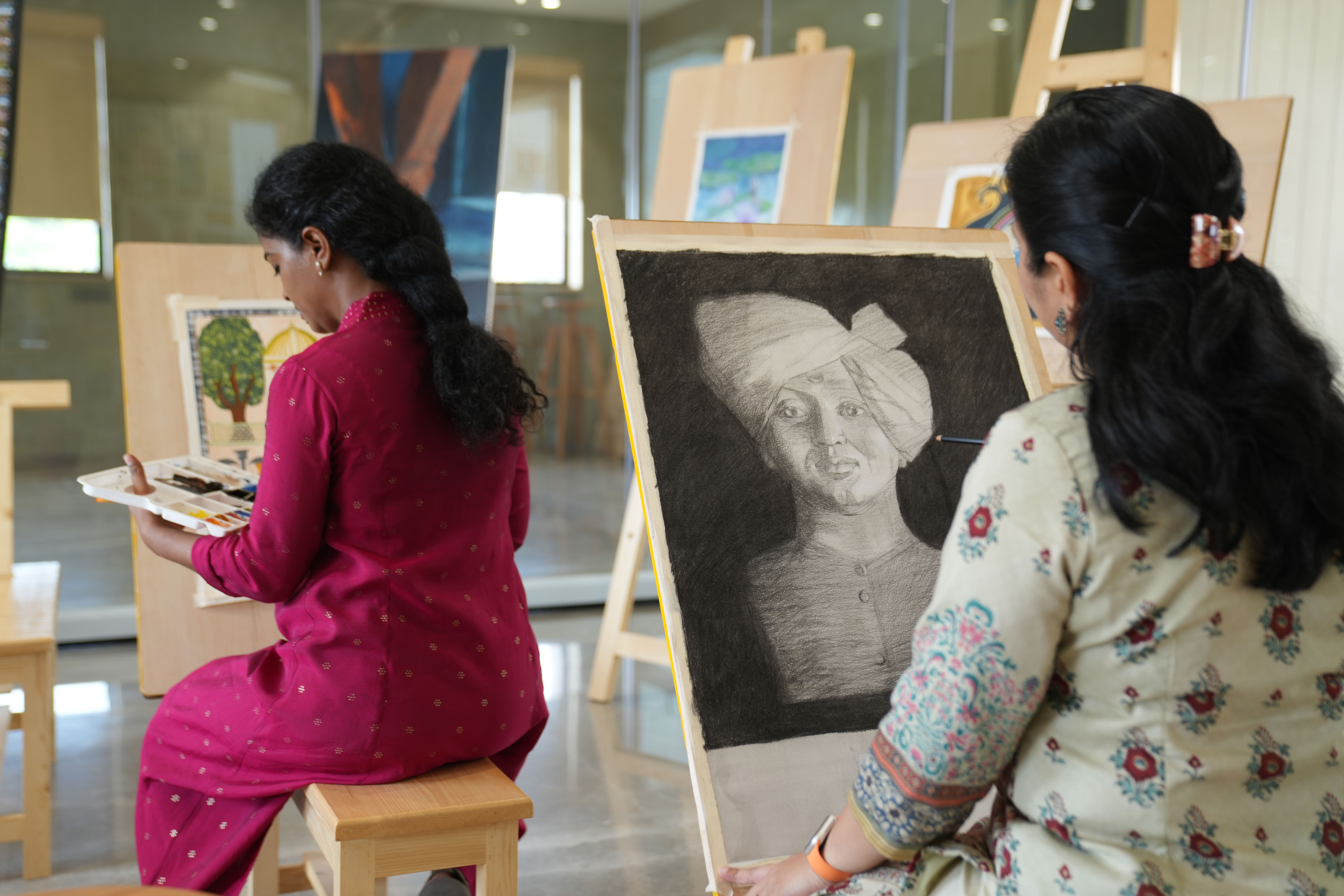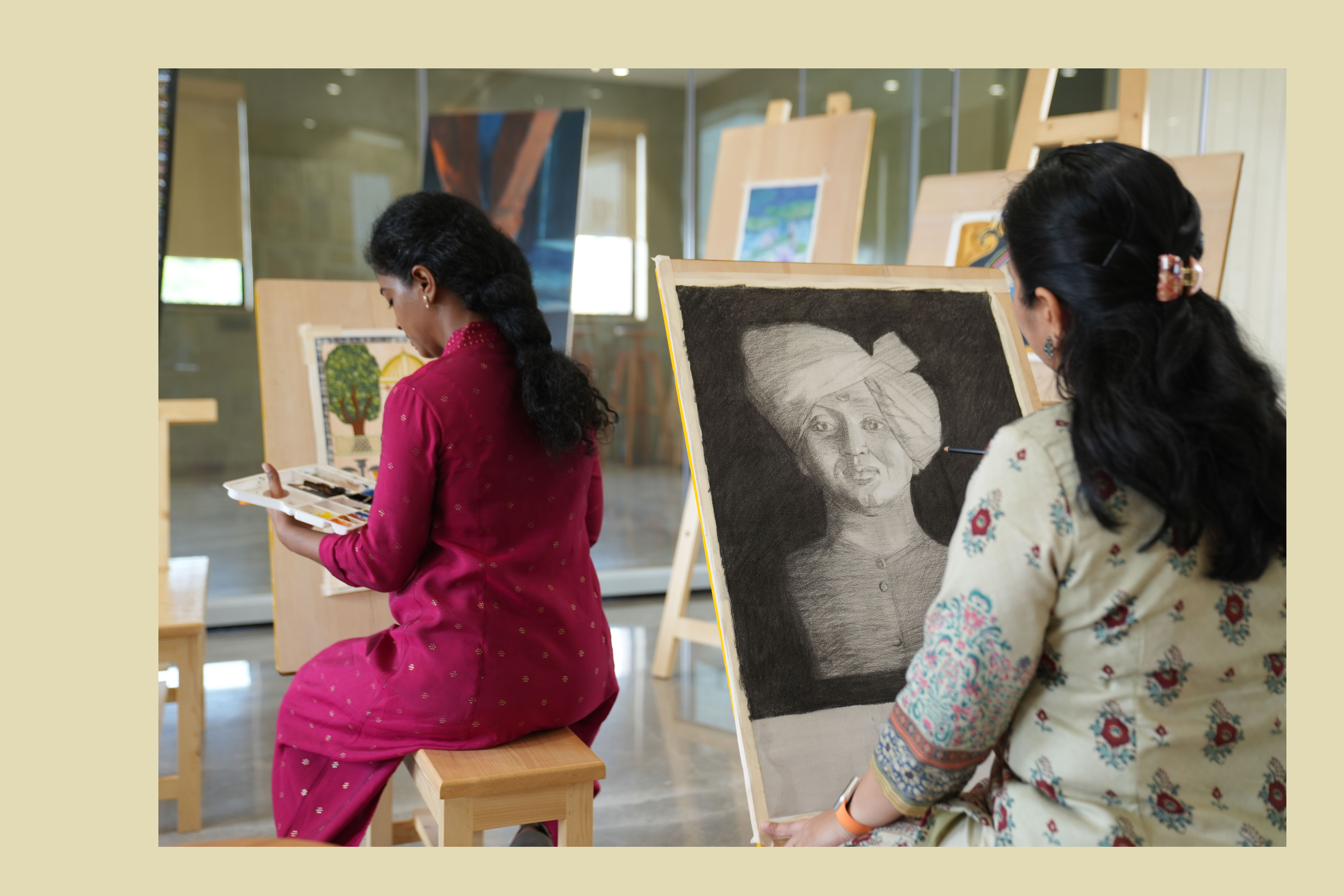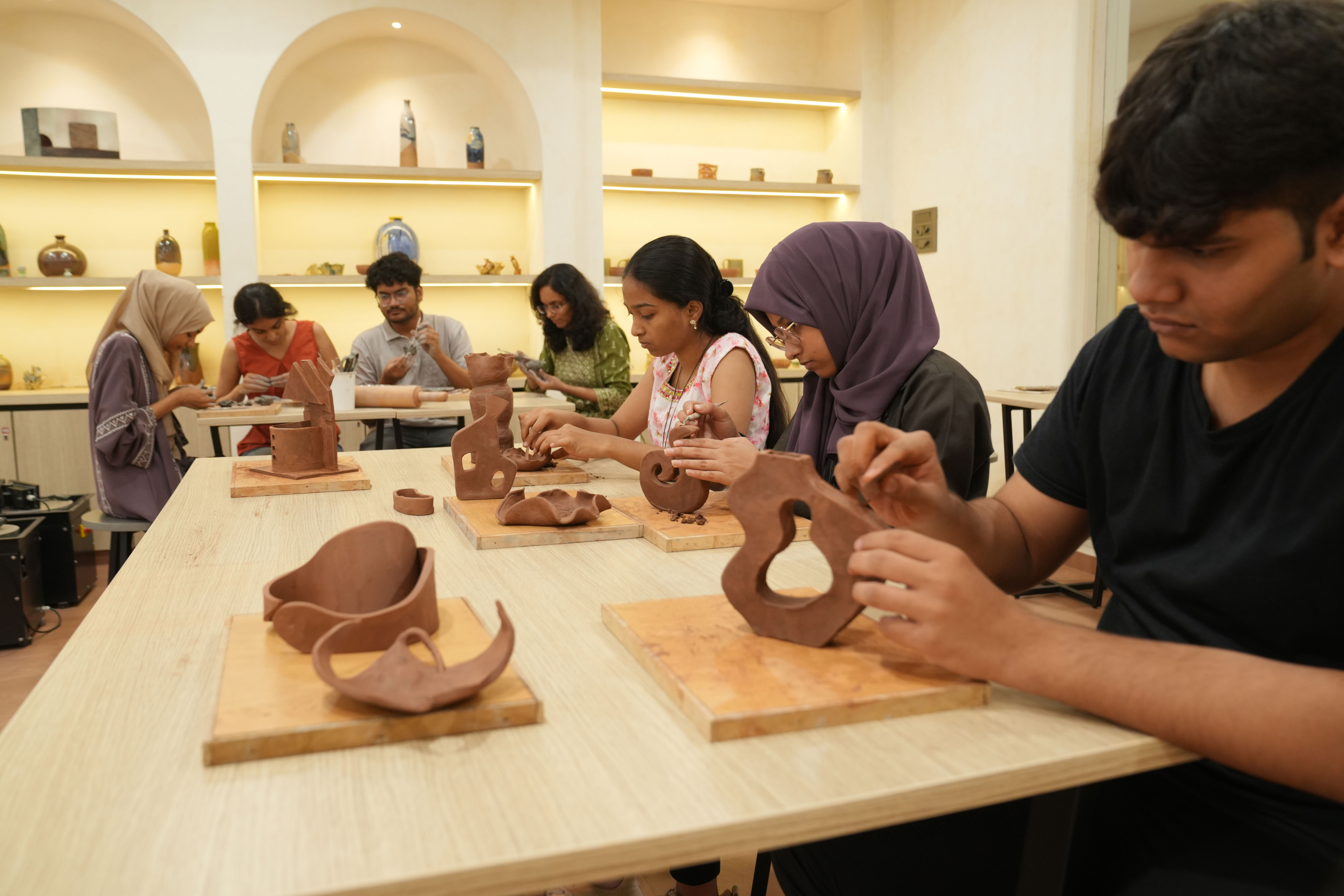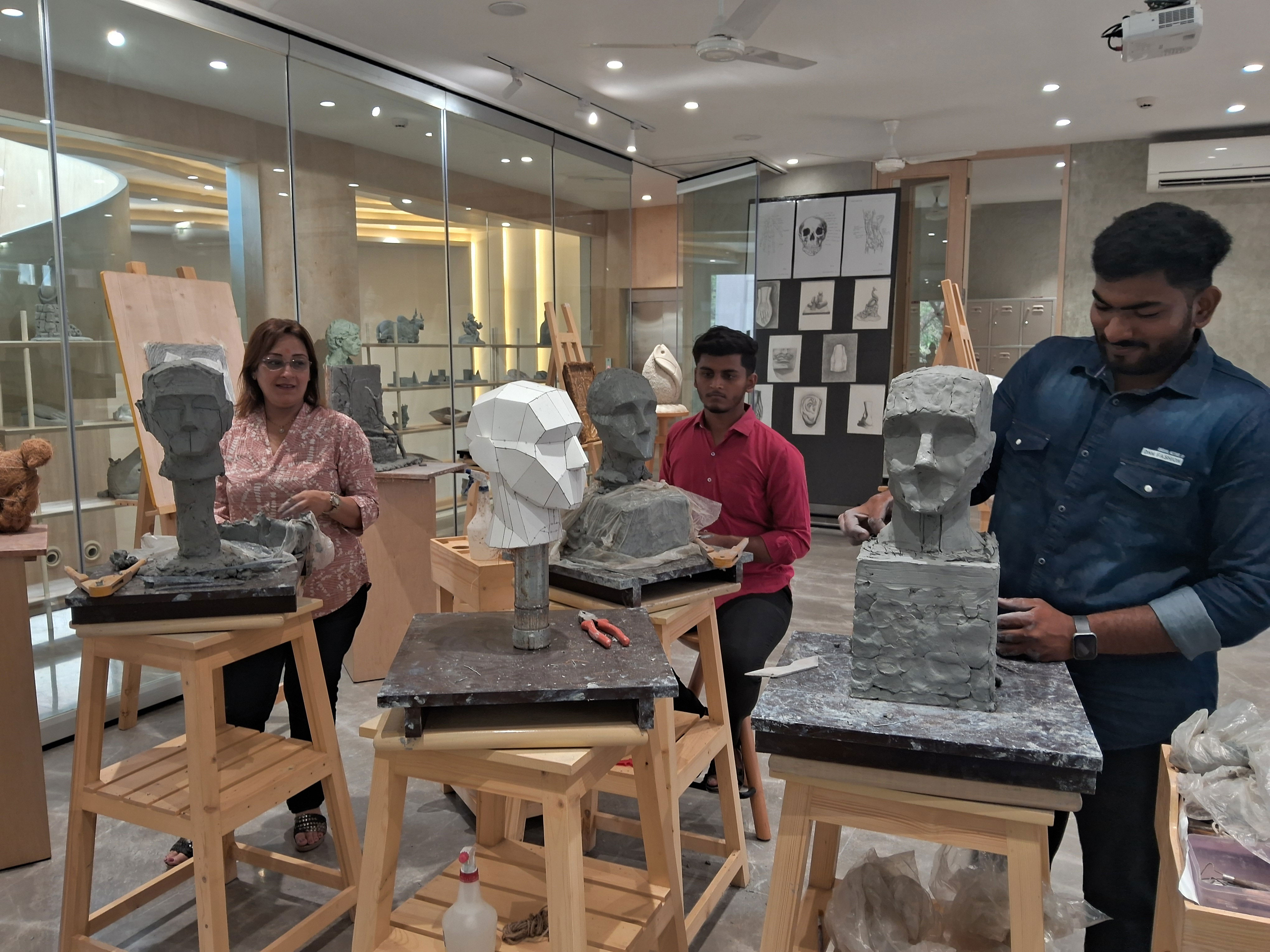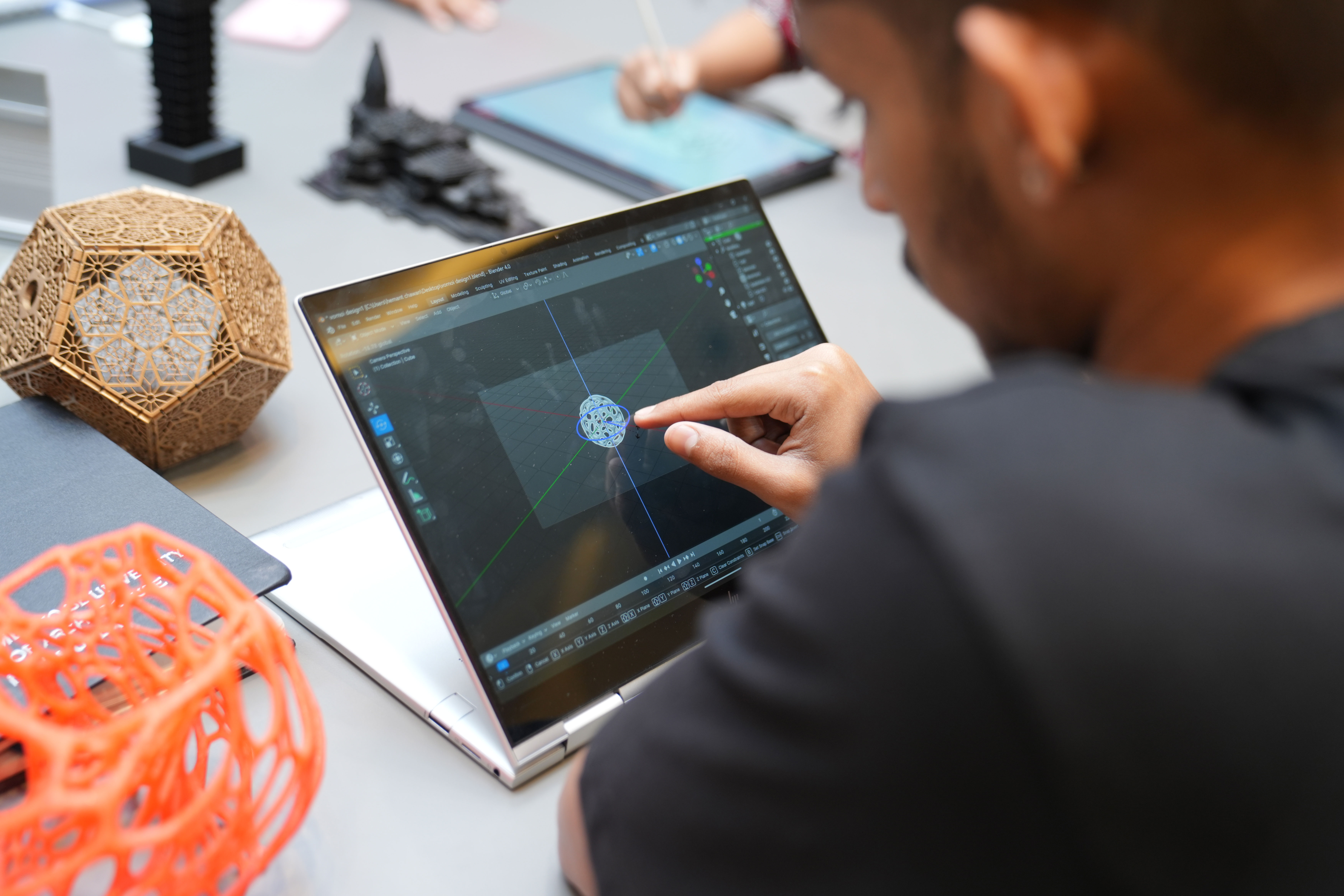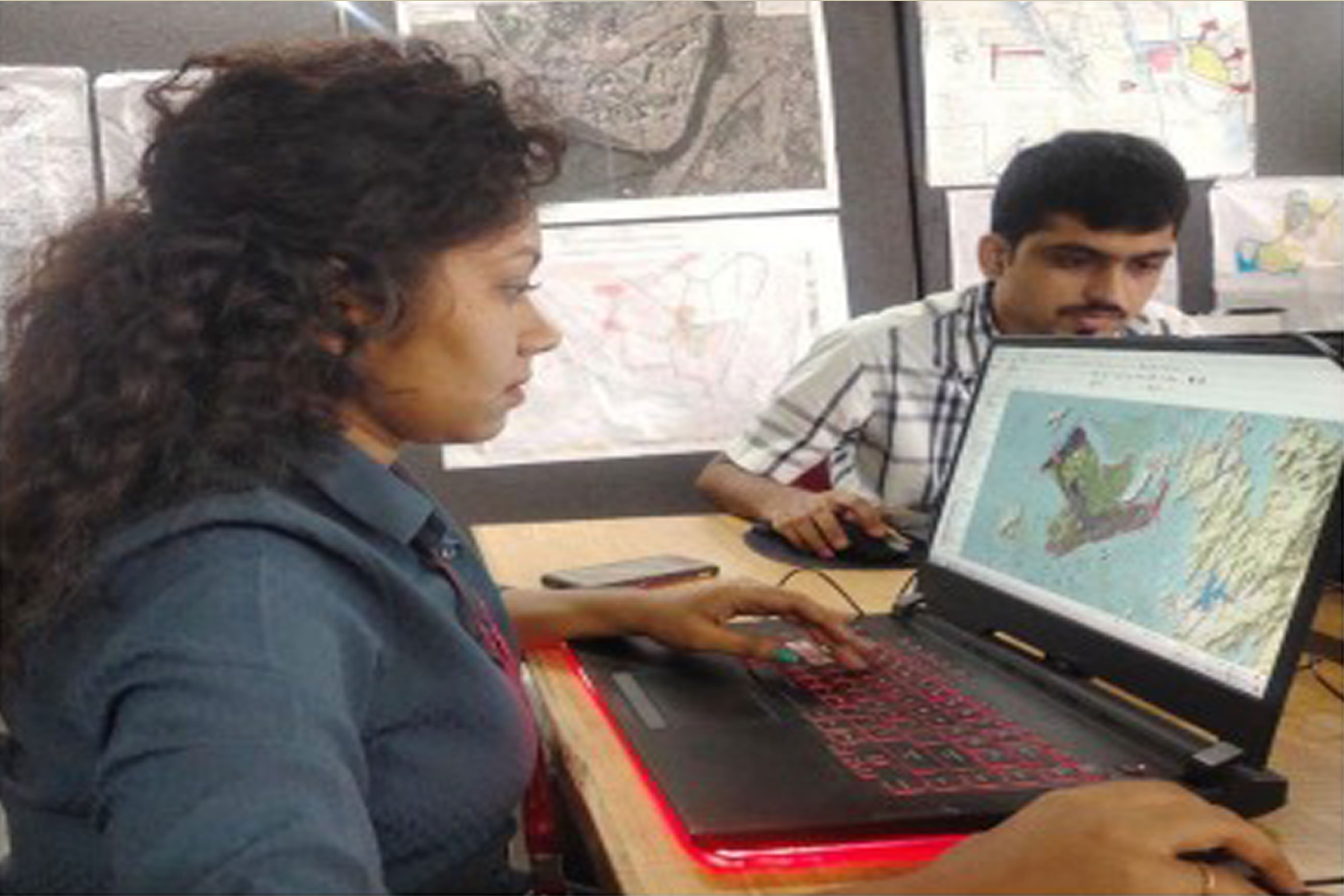About the
Program
The Certificate programme in Painting introduces the fundamentals of art through various techniques of paintings. This studio-based course offers an introduction and practical experience in developing the language of painting. Hands-on experimentation with several mediums and different approaches of visuals with respect to historical and cultural influences. Students use sketching, painting, printmaking, new media and comprehend the whole process in a portfolio with their analysis. Students investigate the connections between concepts and implementation and embark on the world of professional visual practices.
Program
Objectives
- Analyse and review the elements and principles of art & design with reference to visual arts (paintings/murals).
- Develop capacity in various techniques and materials relevant to the ever- changing art practices
- Recognise the historical and cultural influences on visual art.
- Develop a presentable Portfolio
- Communicate ideas effectively using the vocabulary of art.
Program
Syllabus
1. FOUNDATION WEEK FOR VISUAL ARTS
Leaming Fundamentals of arts like line, colour, value, composition, form, brush work and perspective, rhythm, these fundamentals can provide a foundation for your art as you discover new ways to compose pieces.
2. DRAWING FROM LIFE
Learning how to draw from life is to train the eye to be thorough in observation and interpretation of what you see. Academic methodologies allow the student to train the eye to achieve this, and thereby, through practice, reach a stage where they can find their ownartistic voice. Broadly speaking, the course consists of a brief introduction on how to draw & paint objects as you see (Still Life), and how to draw & paint from life as you see (portraiture).
Still Life from observation of objects arranged in studios. Head study – drawing from Life Model sitting in studios at eye level. With this practical knowledge, a theoretical understanding of
the evolution of art is necessary.
3. COMPOSITION & CREATIVE PAINTING
Creative Painting is the Course that has the most importance in terms of building self-expression and creating your own palette, including form styling, concept building, analyses and composition in harmony with all three. Emphasis is given for building an individual expression of visual language and using a medium that reflects one’s individual concept.
4. PRINTMAKING
Printmaking is the process of creating artworks by printing, normally on paper, but also on fabric, wood, metal, and other surfaces. Prints are created by transferring ink from a matrix to a sheet of paper or other material, by a variety of techniques and mediums such as stone, Lino, fabrics, metal sheets etc. A very important source for creative expression will be explored during Printmaking.
5. NEW MEDIA
Mix Media artwork is working with more than one medium or material. Assemblages, collages and installation are introduced using different applications. Material used to create art can include many techniques and the possibilities are endless. The aim is to harmonise the visual impact within a context.
6. FIELD STUDY
Visiting galleries and museums, meeting with practising artists’ studios along with different artisans who are engaged in professional art practicing. It would be learning about Gallery operations, administrative services etc. Along with learning Master Artworks with observation and historical references. Understanding how the studios are set up and also exploring the possibilities of interning under them. The field trips would provide students with border avenues of studio professions and will also make them aware of the challenges.
7. PROJECT BUILDING
As an opportunity for culmination of various techniques, skills and methods learnt, students will develop a Design project via which they would demonstrate new ideas and self- expression.
Program
Infrastructure
Our Visual Art and Computational Design labs are equipped with a blend of traditional studio facilities and cutting-edge digital technology. The infrastructure supports creative exploration across mediums, combining hands-on art-making with advanced computational tools. Key resources include high-resolution drawing tablets, 3D printers, laser cutters, VR/AR systems, powerful workstations with design software (such as Adobe Creative Suite, Blender, Rhino, and Processing), and dedicated spaces for digital fabrication and projection-based installations. These labs foster a multidisciplinary approach, encouraging innovation at the intersection of art, design, and computation.
